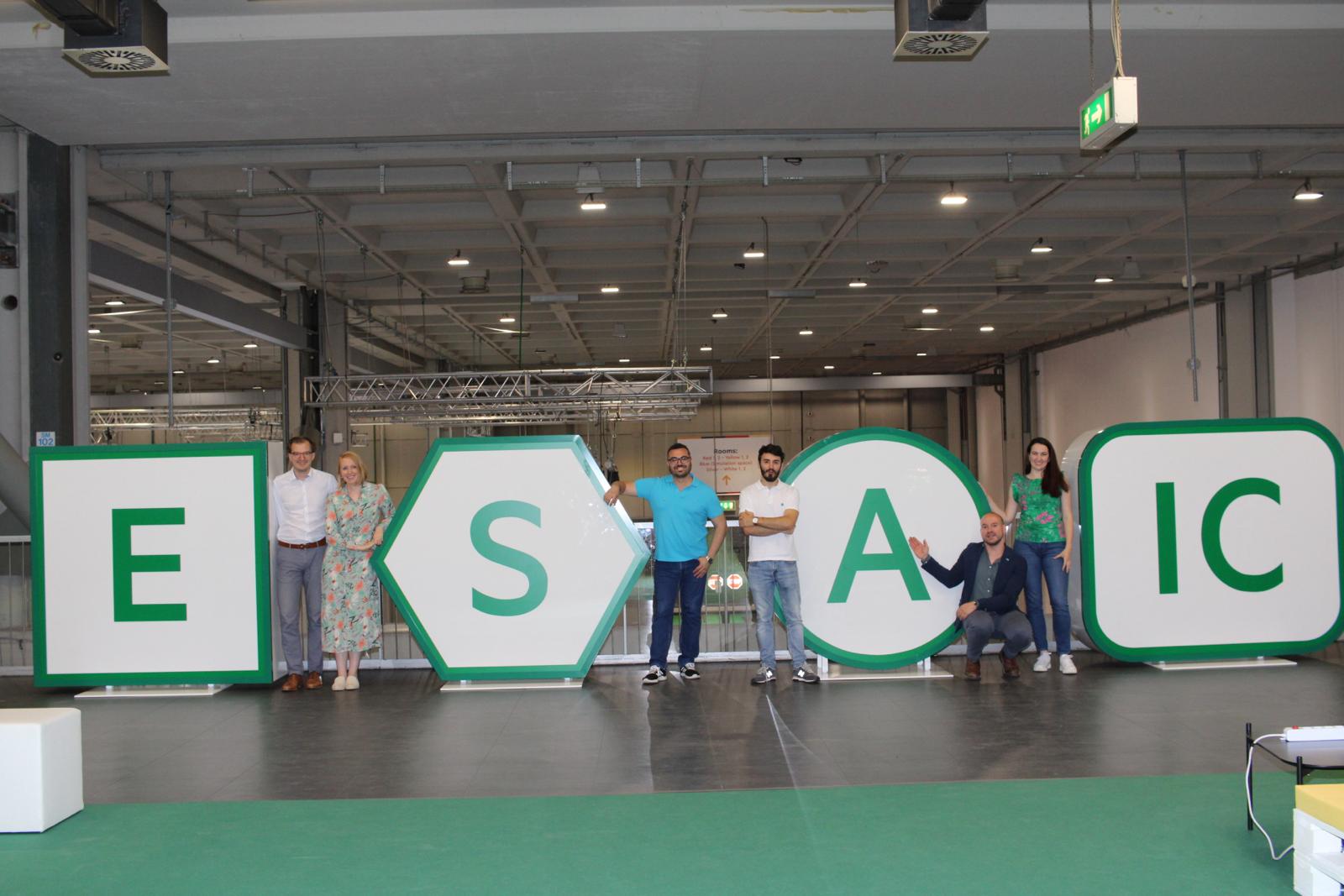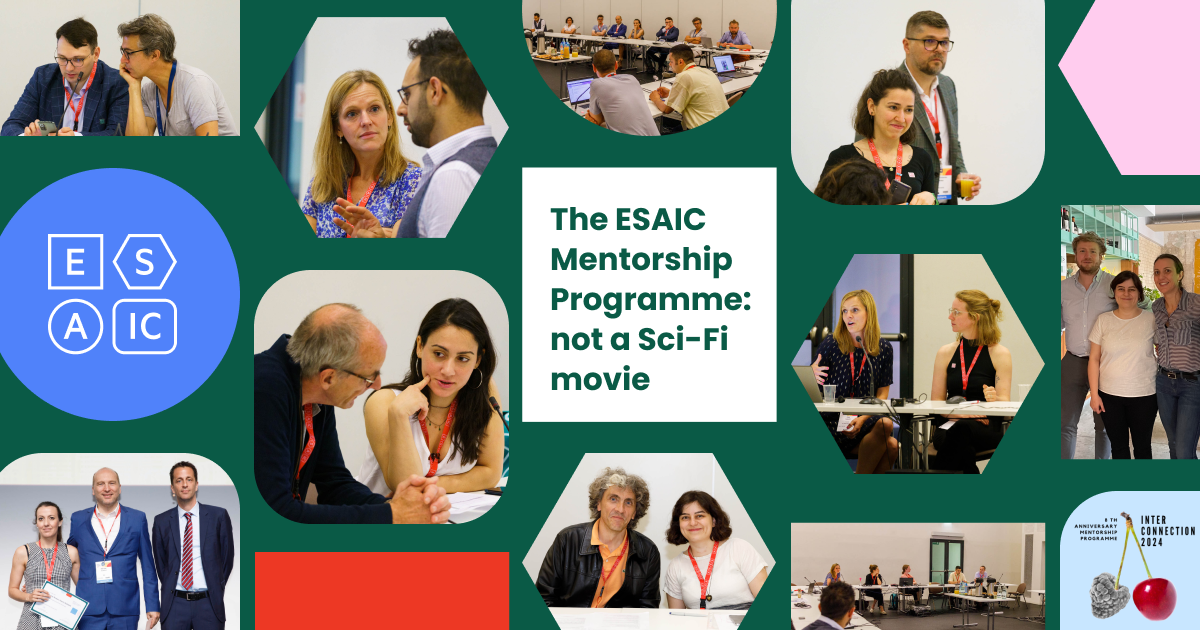ESAIC News
World Patient Safety Day 2022 - Improving medication safety and other safety initiatives
WHO’s World Patient Safety Day in 2022 (Saturday, 17 September) will focus on improving medication safety. The European Society of Anaesthesiology and Intensive Care (ESAIC) fully endorses this initiative and highlights that it first promoted medication safety back in 2010 as part of its ‘Helsinki Declaration on Patient Safety in Anaesthesiology’, signed by all anaesthesiology national societies in Europe and many countries beyond Europe’s borders.
Initiatives to further promote medication safety have been made since the Helsinki Declaration by ESAIC and its sister organisation, the European Board of Anaesthesiology, including through publications in the European Journal of Anaesthesiology.
According to WHO, medication harm accounts for 50% of the overall preventable harm in medical care. Furthermore, US$ 42 billion of global total health expenditure worldwide can be avoided if medication errors are prevented.
Dr David Whitaker, European Board of Anaesthesiology (EBA) representative in ESAIC’s Patient Safety and Quality Committee, and Chair the EBA Patient Safety Committee, Manchester UK, commenting on the WHO initiative, said: “Great opportunities exist to reduce and remove human factor errors in medication safety through better pharmacy procurement of safer, end-user friendly medicine preparations, avoiding preparations that look and sound alike, can easily be confused with others, using ready-to-administer prefilled syringes and standardisation of work surfaces and medication processes.”
He adds: “Key factors around this that ESAIC would like to emphasise are that the manipulation of medicines in clinical areas should be minimised to avoid errors – ideally medications should already be prepared and require no further staff interventions. Injectable medicines should be presented as prefilled syringes, already labelled or as other ‘ready-to-administer’ preparations wherever possible.”
“All medications prepared for routine use in anaesthesia, intensive care, critical emergency medicine and pain medicine should be clearly labelled. In addition, when drawing up medicines into syringes they should always be labelled immediately after filling before they leave the operator’s hand. Empty syringes should never be labelled. In combination, these interventions would reduce much of the avoidable medication harm we regrettably still see with injectable medicines today.”
While ESAIC welcomes the WHO project on patient safety, the society highlights that this is only one part of the overall patient safety picture and points to several other initiatives it has launched to improve all aspects of the patient safety continuum. Patient Safety is central to ESAIC’s core strategy: the society is dedicated to improving patients’ experience as they undergo care and reducing unnecessary harm wherever it occurs.
ESAIC’s Safer Care to Save Lives project is a comprehensive package of Patient Safety education for anaesthesiologists, healthcare professionals, hospital management and patients, driven by the society’s Patient Safety and Quality Committee working with industry partners. The project was born out of extensive research. It is built on the principles laid out by the Helsinki Declaration, the Consensus Statement of the multi-Society Patient Safety Summit at the European Parliament in 2020, and the WHO Multi-professional Patient Safety Curriculum.
ESAIC’s Dr Jannicke Mellin-Olsen (ESAIC Patient Safety and Quality Committee Member and Past President, World Federation of Societies of Anaesthesiologists) said: “Education in patient safety will empower all those involved in healthcare to contribute with their knowledge and experience. This will ensure that no patient is harmed when they trust their medical team to safeguard their life and health when they are at their most vulnerable during our care.”
Recommendations for this new safety project also came from the ESAIC-convened Patient Safety Summit in 2020. The summit saw ESAIC leading a collaboration with the major medical societies in Europe to bring Patient Safety to the EU parliament. The result of the was “Multi-disciplinary and patient-centred approaches to perioperative patient safety: A European consensus statement”.
Safer Care to Save Lives includes a series of eLearning modules for the beginner. Another component is the Advanced Patient Safety Course, a unique course to earn a qualification in Patient Safety, which takes place in Amsterdam on September 19 and 20, the days immediately following World Patient Safety Day (the course is completely sold out). There will also be an annual Patient Safety and Quality Masterclass – a deeper, interactive experience covering 3 days; and an annual Anaesthesia and Intensive Care Crisis Simulation Masterclass, which helps improve the practice of key requirements of the Helsinki Declaration through high fidelity simulation scenarios.
The COVID-19 pandemic also thrust anaesthesiologists and intensive care specialists into the headlines as never before, with every part of their work, mostly previously unseen by and unknown to the public, suddenly part of the daily news agenda. This, along with the research as mentioned above on the implementation of the Helsinki Declaration, was the inspiration for another ESAIC project: Peer Review in Patient Safety in Anaesthesiology and Intensive Care (PRiPSAIC).
PRiPSAIC will create networks of anaesthesiologists and intensive care physicians both within and between countries and give them the tools and support they need to examine their own practice and those of their peers and provide solutions for the future.
ESAIC will work with industry partners, national societies of anaesthesiology and intensive care to find and network ‘change champions’ and ambassadors for patient safety in hospitals in selected European countries; the project will be run in four countries: Lithuania, Finland, Republic of Moldova and the Czech Republic.
PRiPSAIC will involve training participants in evaluating patient safety using the implementation methodology and the site visit process used in the Helsinki Declaration Follow-Up research project; allow international exchange of knowledge and experience in patient safety and provide a practical ‘toolkit’ for the self-assessment of patient safety by departments of anaesthesiology to support further implementation of the Helsinki Declaration. One site visit has already been completed, in which doctors from Lithuania visited Glasgow Royal Infirmary in Scotland.
Prof Andrew Smith (Lancaster Patient Safety and Health Services Research Unit and representative in ESAIC’s Patient Safety and Quality Committee) said: “Every anaesthesiologist and every department they work in have skills, knowledge, and experience in patient safety. Unfortunately, too often, anaesthesiologists work in isolation. This new project is about bringing people together in the name of sharing our knowledge on patient safety.”
Ultimately, ESAIC joins other organisations worldwide to mark #WPSD and help raise awareness of medication-safety harm due to medication errors and unsafe practices, as well as of ways to improve safety standards and is dedicated to leading the way in patient safety and ensuring the best care for every patient.
– END –
Note to Editors
About ESAIC
The European Association of Anaesthesiology and Intensive Care (ESAIC) is the leading European organisation for members and national societies for Anaesthesia, Intensive Care, Pain and Perioperative Medicine. ESAIC aims to: promote the exchange of information between European anaesthesiologists; it serves as the hub to disseminate information in regard to anaesthesiology. The Society helps raise the standards of the speciality by fostering and encouraging education, research, scientific progress and exchange of information while promoting improvements in the safety and quality of care of patients who are under the care of anaesthesiologists inside and outside the operating room by facilitating and harmonising the activities of national and international societies of anaesthesiologists in Europe. Furthermore, ESAIC promotes the professional role of anaesthesiologists to improve the care of patients in the fields of anaesthesiology, intensive care, perioperative medicine, emergency medicine, and pain medicine.
For more information, please visit: https://www.esaic.org/patient-safety/
About the KOLs quoted on this PR
- Dr David Whitaker, ESAIC Patient Safety and Quality Committee (Chair the EBA Patient Safety Committee, Manchester UK. Please e-mail to arrange interview. E) whitaker2000@gmail.com
- Dr Jannicke Mellin-Olsen, ESAIC Patient Safety and Quality Committee; Trondheim University, Norway; and Immediate Past-President of World Federation of Societies of Anaesthesiologists. Please e-mail to arrange interview. E) jannicke@mellin.no / mellinolsen@gmail.com
- Professor Andrew Smith, ESAIC Patient Safety and Quality Committee; consultant anaesthetist at the University Hospitals of Morecambe Bay NHS Foundation Trust and Director of the Lancaster Patient Safety Research Unit, Lancaster University, not available for interview as currently on holiday.
For further information, please contact:
Tony Kirby of Tony Kirby PR T) +44 7834 385827 E) tony@tonykirby.com
Sources:
- WHO Patient Safety pages and WHO World Patient Safety Day campaign Medication without Harm https://www.who.int/campaigns/world-patient-safety-day/2022
- Recommendations for safe medication practice from European Board of Anaesthesiology, as published in EJA
- European Consensus Statement (note, ESAIC was formerly known as ESA, until 2020)
- The Helsinki Declaration on Patient Safety in Anaesthesiology and country signatories
- Safer Care to Save Lives
- PRiPSAIC
- The WHO Multi-professional Patient Safety Curriculum










